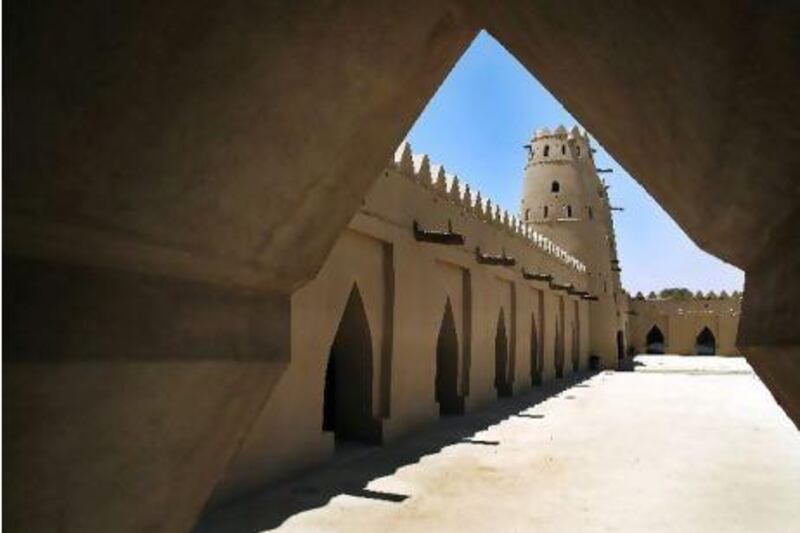AL AIN // The first thing that enters Sheikha Abdullah's mind when she looks at a Dh50 banknote is food.
"Fifty dirhams is just about enough to get a couple of meals from a restaurant here," says the Emirati from Al Ain, aged 19.
It is only after Ms Abdullah looks more closely at the note that she realises its cultural significance.
"Wow, sometimes things are right in front of a person but we never notice them," she says.
Al Jahili Fort in Al Ain, pictured on the back of the D50 note, is not the oldest building in the country and the oryx on the front is not the UAE's national animal, but both reflect the nation's pride, history and culture.
The oryx is believed to have been in Al Ain for centuries, says Dr Reza Khan, a specialist in the Wildlife and Zoo Management Department at Dubai Municipality.
"Arabian Oryx or maha al Arabia was present almost all over the Arabian Peninsula, as suggested by old literature and travelogues, in the desert as well as in the foothills," Dr Khan says.
"It was the only large-hoofed mammal present in this part of the world and nowhere else. The camel is a domesticated animal."
The Arabic word "oryx" translates to "dhabi", after which the capital is named.
"The dhabi was the symbol for most peninsular Arabs and a part of their history and culture," Dr Khan says. "Arabs consider it a symbol of pride."
"I understand in the olden days people used to hunt oryx," Dr Khan continues. "The advent of automatic rifles supported by four-wheel drive vehicles led to mass killing of this helpless beast up to the early 1970s."
Now, the oryx is protected across the country.
Al Jahili Fort is home to music festivals and other cultural activities. It has been restored several times since its image on the banknote was created.
"It is Jahili Fort's old picture before the 1980s renovation and the renovation work that Adach has undertaken," a representative from the Abu Dhabi Authority for Culture and Heritage says.
"It … can be considered as a late Islamic fort, which was built in 1898."
Geoff Sanderson, who has conducted research on the fort, says the Dh50 note is a great representation of the recent history of Al Ain, especially because of one prominent figure in UAE history who lived there.
"One of the most significant places in the Abu Dhabi emirate is Al Jahili Fort," Mr Sanderson says.
"Some believe it was the birthplace of Sheikh Zayed, but I don't think it was.
"It has also been symbolically represented by the Bani Yas tribe."
The fort is architecturally the most significant such structure in the country, he says. Last month, Al Ain was added to the UN Educational, Scientific and Cultural Organisation's world heritage list, largely because of its oases, irrigation systems and archaeological sites, including the fort.
Last week, we looked at the Dubai Creek Golf and Yacht Club and the dhow, the images of which grace the Dh20 note. Next week, we will look at Al Fahidi Fort and Dubai World Trade Centre as featured on the Dh100 note.






